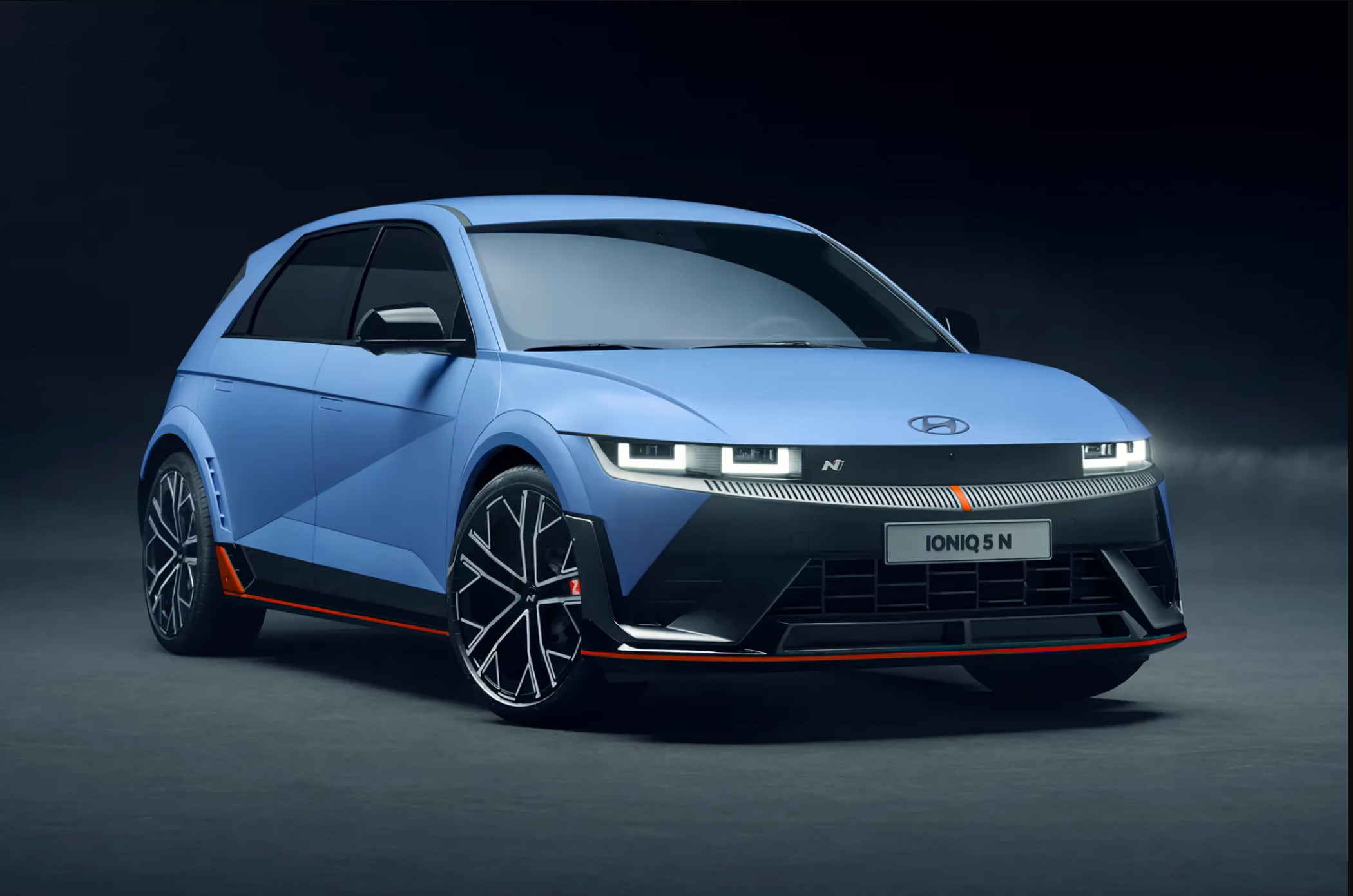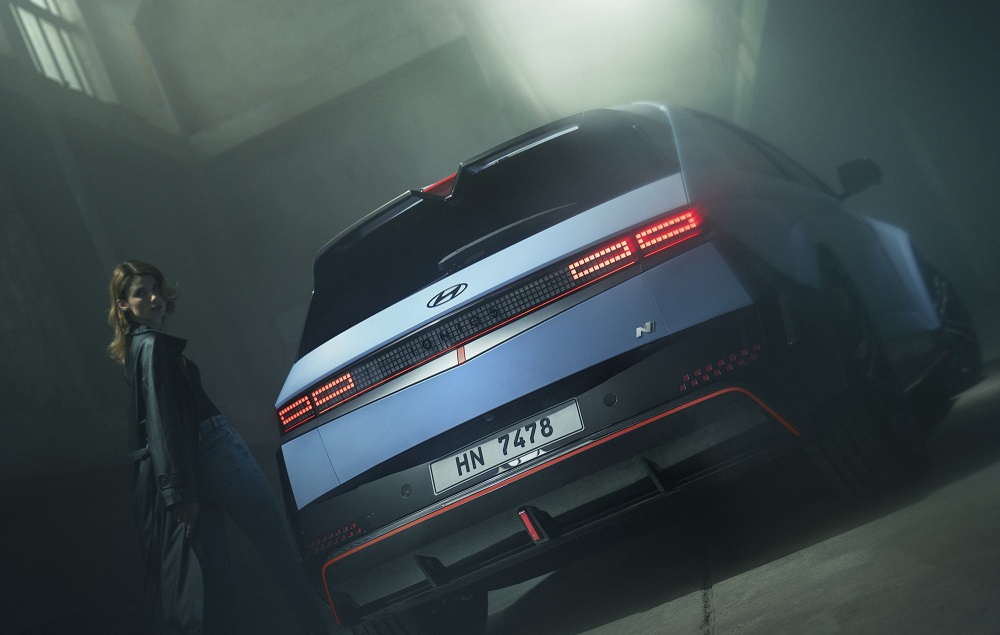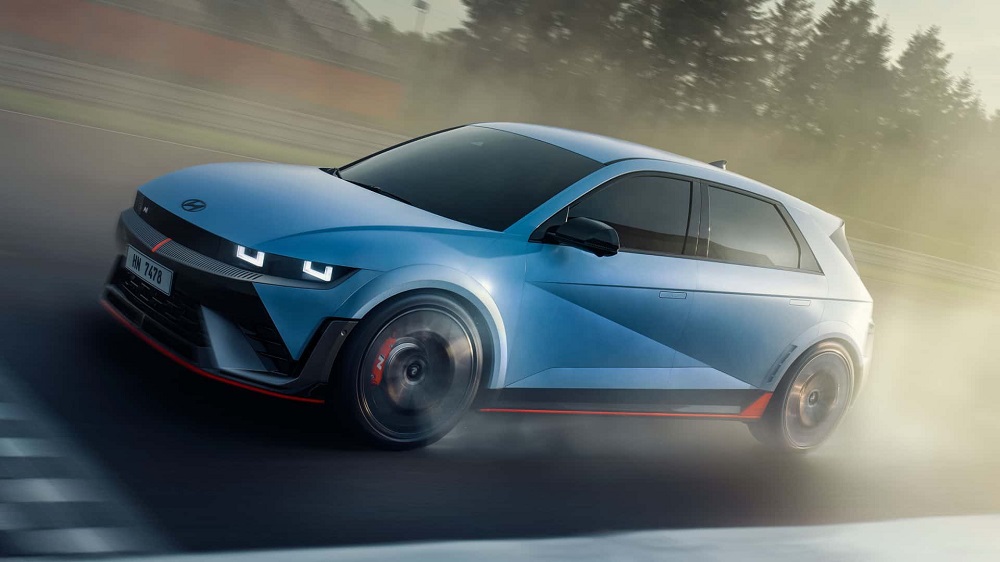Hyundai Ioniq 5 N: Unleashing the Thrill of EV Performance

Key Points:
- Hyundai launches Ioniq 5 N, a performance variant of the popular crossover EV.
- The vehicle features an "e-shift" dual-clutch transmission, simulating a traditional eight-speed gearbox.
- Ioniq 5 N offers up to 478kW power, equivalent to 641 horsepower, surpassing Tesla's Model 3 Performance.
- "N Grin Boost" mode enables a 0-62 mph sprint in about 3.4 seconds.
- Visual enhancements include a deeper front bumper, an N badge on the grille, red accents, and 21-inch aluminium wheels.
- The vehicle retains a 84kWh usable battery capacity, supporting 350kW charging with a 10-80% charge time of 18 minutes.
The Dawn of a New Driving Experience
Hyundai aims to shift the perceptions about electric vehicles (EVs) with its latest model, the Ioniq 5 N. While EVs traditionally may not carry the exhilaration associated with manual gear-shifting vehicles, Hyundai is set to redefine this notion.
The #Hyundai Ioniq 5 N draws 641 hp from its electric powertrain, but it can sound like a gas-powered car and simulate shifts. The story --> https://t.co/vnW6FNwmNM pic.twitter.com/XsFPGKgBrR
— MotorAuthority (@motorauthority) July 13, 2023
Ioniq 5 N: Power Meets Performance
The Ioniq 5 N is a high-performance version of Hyundai's popular crossover EV, equipped with a simulated eight-speed transmission and capable of delivering an impressive 478kW (equivalent to 641 brake horsepower).
The Unique e-Shift Transmission
This new "e-shift" dual-clutch transmission is designed to mimic the sensation of driving an internal combustion engine vehicle, but without the associated emissions. The technology provides adjustments to the torque output on the dual motors, mimicking gear shifts complete with faux engine noises and jolts for an immersive driving experience.
A Touch of Manual Control
Drivers can opt for 'manual' control using shift paddles, and the system even simulates the feeling of a cutoff in case of a missed timing.

The Powerful Drive of the Ioniq 5 N
With a combined maximum output of 478kW through its "N Grin Boost" mode, the Ioniq 5 N can go from 0 to 100km/h in just 3.4 seconds. This performance stands in stark contrast to the standard Ioniq 5 AWD, which offers 239kW (equivalent to 320 brake horsepower) and is about a second slower. The new model even outperforms Tesla's Model 3 Performance, which generates approximately 335kW (or around 450 brake horsepower).
Design Tweaks and Added Features
The Ioniq 5 N differs slightly in appearance from the standard model, with a deeper front bumper and a functional mesh that allows more airflow. Distinctive sporty features, such as the N badge on the grille and a red accent on the front and rear bumpers, add to its sporty appeal.
Embracing the Electric Future
As the industry leans more towards electric vehicles, automakers are finding creative ways to attract car enthusiasts who hold a soft spot for traditional internal combustion engine cars. Hyundai, Ford, Jeep, and Toyota are all developing systems that give a nod to the traditional driving experience while embracing the future of EVs.

Charging and Other Features
The Ioniq 5 N comes with an 84kWh battery, a significant increase from the standard's 77.4kWh. Despite the new model not using Hyundai's newly announced Integrated Modular Architecture (IMA) EV platform, it does support 350kW charging and can charge from 10 to 80 percent in 18 minutes.
Like its standard counterpart, the Ioniq 5 N boasts the vehicle-to-load (V2L) system, which essentially transforms your car into a large battery bank. However, Hyundai has kept quiet about the vehicle's range. If its sister company Kia's EV6 GT performance model is anything to go by, long road trips may not be its strong suit.
With the Ioniq 5 N, Hyundai promises an exciting transition into the future of driving while retaining the familiarity of the past.
Comments
No posts found










